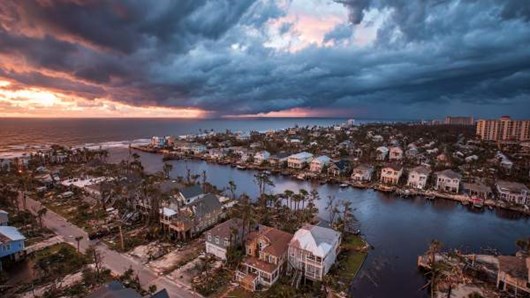Catastrophe Risks
Insurers Confront Evolving Weather Risk Paradigm, KBRA Report Finds
Kroll Bond Rating Agency's (KBRA's) report, "Beyond the Coastline: Insurers Confront Evolving Weather Risk Paradigm," analyzes how insurers are managing shifting weather exposures, tighter reinsurance terms, and increased losses from wildfires and storms. The study highlights enhanced catastrophe modeling, Florida market reforms, and expanded use of parametric and alternative capital solutions. Learn More
Aon Reports $114 billion in Global Insured Losses as 2025 Disaster Activity Slows
Aon's Global Catastrophe Recap—Q3 2025 found $114 billion in global insured losses and $203 billion in economic losses. Despite below-average disaster activity, US wildfires and storms dominated results. The protection gap fell to a record-low 44 percent, highlighting increased insurance coverage across key markets. Learn More
WTW and Swiss Re Launch Parametric Policy Triggered by Forecasts
WTW and Swiss Re have introduced a parametric insurance policy that triggers coverage based on red weather warnings in the United Kingdom and Ireland. This forecast-based model offers pre-agreed payouts for operational losses, even if the severe weather does not occur, addressing gaps left by traditional damage-based insurance. Read More
Munich Re Cites Growing Risks, Rising Demand in Reinsurance Market
Munich Re reports rising reinsurance demand driven by climate change, geopolitical instability, and cyber threats. Insured catastrophe losses reached $80 billion in early 2025. The company emphasizes risk-adequate pricing, capital strength, and innovation as it prepares for the January 2026 renewals amid evolving global risk and insurance landscapes. Read More
Cat Bond Surge Expands ILS Capacity, Softens Reinsurance Pricing
A new AM Best report shows record catastrophe bond issuance in 2025 is expanding insurance-linked securities (ILS) capacity and softening reinsurance pricing. June renewals fell around 10 percent overall, with varied rate shifts by risk layer. Increased demand in Florida and broader investor access are reshaping the reinsurance market landscape. Read More
Insurers Differ in Catastrophe Model Use, Aon Survey Finds
Aon's 2025 survey shows insurers vary widely in catastrophe model adoption, with regional differences in climate risk priorities. Many rely on brokers for analytics and accumulation management. Key concerns include data quality, model transparency, and nonmodeled losses, underscoring the need for robust, science-based risk management strategies. Read More
Swiss Re Reports Active First Half for ILS Market in 2025
Swiss Re's "ILS Market Insights: July 2025" details a robust first half for the insurance-linked securities (ILS) market, with over USD 17 billion in catastrophe bond issuance. High investor demand, strong yields, and low correlation to traditional markets continue to support growth, offering insights into evolving risk transfer and reinsurance capital strategies. Read More






